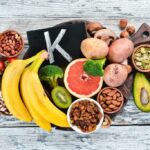Food poisoning can be a distressing experience. When nausea, vomiting, and diarrhea strike, eating is likely the last thing on your mind. However, once the worst symptoms subside, it’s crucial to rehydrate and replenish your body’s energy. Knowing What To Eat After Food Poisoning and what to avoid is key to a smooth recovery.
“Recovery from food poisoning is quite individual, depending on the cause, severity, and duration of your symptoms,” explains Dr. Neeharika Kalakota, a leading gastroenterologist at Houston Methodist. “Viral infections like norovirus are often short-lived, while other causes can lead to symptoms lasting several days.”
While everyone’s recovery timeline differs, this guide offers a step-by-step approach to eating after food poisoning, from the initial hours to the following weeks.
Hours 0-6: Start with Ice, Slowly
During the initial hours of food poisoning, your body loses significant fluids due to vomiting and diarrhea. This fluid loss can quickly lead to dehydration. Once vomiting begins to ease, rehydration becomes the priority. Dr. Kalakota recommends starting very gently with ice chips or popsicles.
“In the first few hours post-vomiting, avoid gulping or chewing,” Dr. Kalakota advises. “If you are concerned about dehydration, especially if you are in a high-risk group, contacting your doctor for personalized advice is a good step.”
Infants, young children, and older adults are particularly vulnerable to dehydration. Pre-existing conditions such as kidney disease or untreated diabetes can also increase dehydration risk.
6+ Hours: Clear Liquids are Your Friend
Once you can tolerate ice chips and keep them down, introduce clear liquids in small sips. Liquids containing some calories can provide a gentle energy boost as you transition back to solid foods.
“Good options include water, diluted apple juice, grape juice, or even clear broth,” suggests Dr. Kalakota. “The key is to choose drinks that are non-carbonated and clear. Avoid sugary drinks and milk initially as they can sometimes worsen diarrhea.”
It’s important to listen to your body and adjust this timeline accordingly.
“Six hours is just a general guideline,” Dr. Kalakota notes. “You might feel ready for liquids sooner, and that’s perfectly fine. If you feel better quicker, you can move through these stages faster.”
Conversely, if you are still struggling, slow down the progression. If you can’t keep down even sips of water after six hours, it’s time to contact your healthcare provider.
“If you can’t keep liquids down, reach out to your doctor for guidance,” advises Dr. Kalakota. “If your condition worsens and you feel unable to manage symptoms at home, consider going to the emergency room. Everyone has a different point at which they need extra help.”
In an emergency setting, intravenous (IV) fluids can quickly address dehydration.
“For severe vomiting due to viral gastroenteritis, doctors may also administer an antacid to soothe esophageal irritation caused by excessive vomiting,” Dr. Kalakota adds. “This can alleviate reflux-like symptoms that often accompany intense vomiting.”
After 24 Hours: The BRAT Diet and Bland Foods
As you continue to recover, bland foods are the next step.
“The BRAT diet – bananas, rice, applesauce, and toast – is often recommended as a starting point,” says Dr. Kalakota. “If you don’t like BRAT foods, other bland options like crackers, plain oatmeal, or plain grits are also suitable.”
Again, the timing for introducing solid foods is personalized and depends on your symptom improvement.
“Start with small portions and eat slowly,” Dr. Kalakota recommends. “Observe how your stomach reacts to these foods and adjust your intake accordingly.”
Days to Weeks Following: Personalized Diet and Foods to Avoid
Food poisoning symptoms can resolve within a couple of days or linger for a week or more. As you feel better, gradually expand your diet, paying attention to how different foods make you feel.
Dr. Kalakota recommends temporarily avoiding the following as your stomach recovers:
- Caffeine: (unless you experience withdrawal headaches, in which case a small amount might be necessary)
- Fried foods:
- Fatty foods:
- Spicy foods:
- Alcohol:
“These items can irritate your digestive system, which is already sensitive after food poisoning,” explains Dr. Kalakota. “Fatty and spicy foods, in particular, can potentially trigger a return of vomiting or diarrhea if introduced too soon.”
After a Week or So: Returning to Your Normal Diet
Understanding what to eat after food poisoning and when to reintroduce different foods is a personalized process. This guide provides a general timeline to help you gradually resume your normal eating habits without overwhelming your system.
“Most people are typically back to their regular diet within a week, but individual recovery times vary,” Dr. Kalakota states.
You might progress through the stages faster or slower than outlined. Listen to your body’s signals and adjust your diet accordingly.
Remember, if you feel unable to manage your food poisoning symptoms at home at any point, seek medical attention.
“At the emergency room, you can receive IV fluids for rehydration and gain reassurance that you are receiving appropriate care,” concludes Dr. Kalakota.
This information is for general guidance only and does not substitute professional medical advice. Always consult with your healthcare provider for personalized recommendations and treatment.
